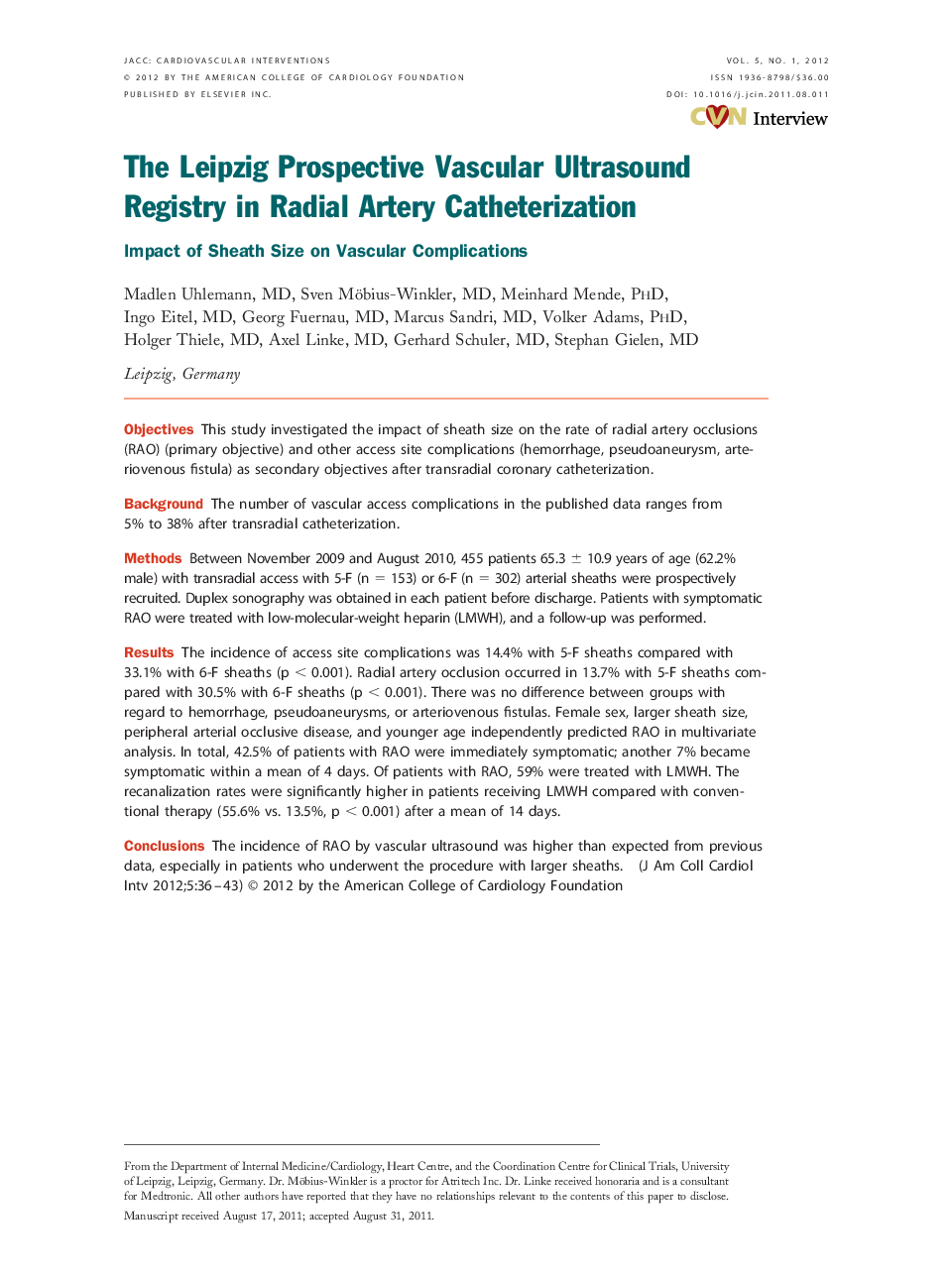| Article ID | Journal | Published Year | Pages | File Type |
|---|---|---|---|---|
| 2941210 | JACC: Cardiovascular Interventions | 2012 | 8 Pages |
ObjectivesThis study investigated the impact of sheath size on the rate of radial artery occlusions (RAO) (primary objective) and other access site complications (hemorrhage, pseudoaneurysm, arteriovenous fistula) as secondary objectives after transradial coronary catheterization.BackgroundThe number of vascular access complications in the published data ranges from 5% to 38% after transradial catheterization.MethodsBetween November 2009 and August 2010, 455 patients 65.3 ± 10.9 years of age (62.2% male) with transradial access with 5-F (n = 153) or 6-F (n = 302) arterial sheaths were prospectively recruited. Duplex sonography was obtained in each patient before discharge. Patients with symptomatic RAO were treated with low-molecular-weight heparin (LMWH), and a follow-up was performed.ResultsThe incidence of access site complications was 14.4% with 5-F sheaths compared with 33.1% with 6-F sheaths (p < 0.001). Radial artery occlusion occurred in 13.7% with 5-F sheaths compared with 30.5% with 6-F sheaths (p < 0.001). There was no difference between groups with regard to hemorrhage, pseudoaneurysms, or arteriovenous fistulas. Female sex, larger sheath size, peripheral arterial occlusive disease, and younger age independently predicted RAO in multivariate analysis. In total, 42.5% of patients with RAO were immediately symptomatic; another 7% became symptomatic within a mean of 4 days. Of patients with RAO, 59% were treated with LMWH. The recanalization rates were significantly higher in patients receiving LMWH compared with conventional therapy (55.6% vs. 13.5%, p < 0.001) after a mean of 14 days.ConclusionsThe incidence of RAO by vascular ultrasound was higher than expected from previous data, especially in patients who underwent the procedure with larger sheaths.
